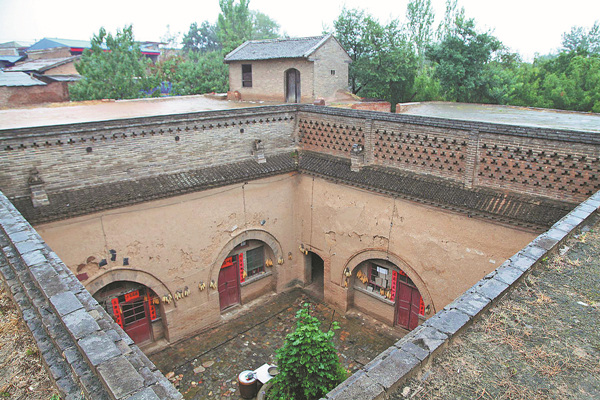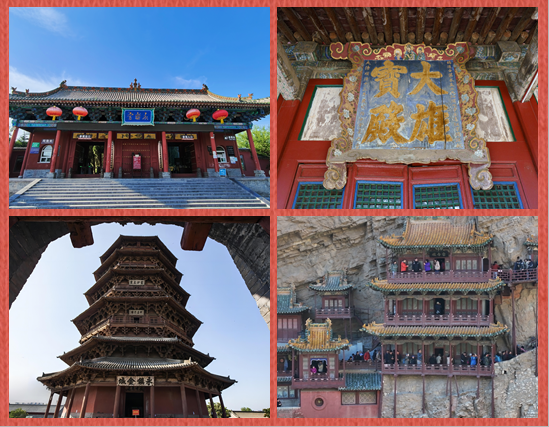Shanxi's silo-caves offer cozy subsurface living
Updated: 2023-08-16

A photo of an underground courtyard, known as silo-cave, in Pinglu county, Shanxi province. [Photo by Jin Weiding for China Daily]
TAIYUAN — With temperatures soaring to 37 C in Pinglu county in North China's Shanxi province, a group of elementary school students from the country's east coast happily enjoyed an excursion to an "underground courtyard" here while reveling in its refreshingly cool ambiance.
Located near the banks of the Yellow River, this peculiar dwelling, known as a silo-cave, was built by local villagers over a century ago and represents a unique kind of human habitation on the Loess Plateau.
When viewed from ground level, a silo-cave looks like a sunken rectangular courtyard encompassed by rooms embedded in its four walls, reminiscent of the layout seen in traditional Chinese quadrangle courtyards.
Jing Kang, deputy director of the cultural center of Pinglu, told the young visitors that this type of traditional residence has a history of more than 4,000 years.
The compact soil structure offers durability and earthquake resistance, while the region's relatively low rainfall and significant seasonal temperature differences create a dry and pleasant living environment in the caves, according to Jing.
Historically, the scarcity of timber resources along the Yellow River also prompted the locals to save on construction costs by excavating cave dwellings, he added.
In 2008, the Pinglu silo-cave construction technique was listed as a national-level intangible cultural heritage.
Zhang Hecheng, an inheritor of the craft, told the students that the entire process, from site selection to interior decorating, can span several years given the need to ensure that the soil is thoroughly dry while digging.
"Why do people living inside the silo-cave feel warm in winter and cool in summer?" asked Guo Yichen, a fifth grader from Shanghai.
Zhang explained that this is due to the cave dwelling's structure and its location about 10 meters underground.
Back in the 1950s, there were about 17,000 silo-caves in Pinglu, forming so-called "subterranean villages." However, with rapid socioeconomic development and an increase in villagers' incomes, more and more people began moving into houses aboveground.
Today, Pinglu boasts over 500 underground courtyards. The county government has designated a folk culture protection zone for these dwellings and placed several of them under key protection. Fixed funds are allocated annually for their preservation, according to Jing.
The authorities are actively harnessing the cultural and touristic value of this traditional architecture. Every Spring Festival in Dongpingtou village of Duma township, villagers engage in traditional celebrations by making paper-cut decorations for windows, steaming flower-shaped buns and making fried dough twists inside the silo-caves.
Seeing an opportunity, a local tourism company has renovated abandoned silo-caves and built a folk customs street and other tourism facilities, giving the village a brand-new look and turning it into a national-level rural tourism demonstration village, said Lu Junling, Party chief of Duma.
In the first half of this year, the number of tourists visiting the silo-caves in Dongpingtou exceeded 30,000, including a visit by a group of more than 1,000 students, Lu said.
In a village in Zhangdian township lies a beautifully decorated silo-cave built over 300 years ago. A local company has restored its traditional charm while incorporating modern living facilities such as showers and laundry rooms, making it an ideal vacation spot.



